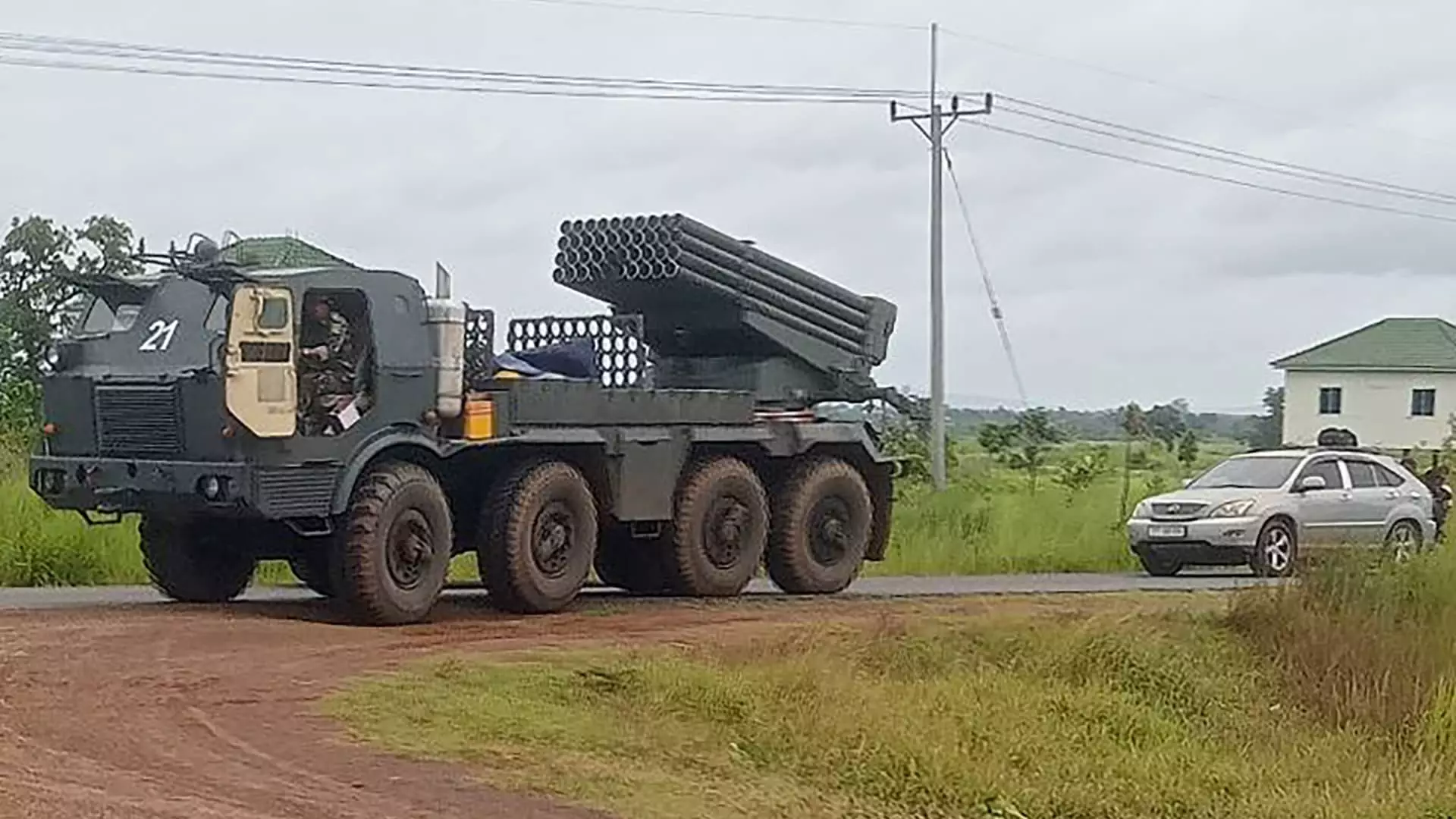The ongoing rise in clashes between Thailand and Cambodia reveals the dangerous fault lines running beneath Southeast Asia’s economic landscape. Both nations heavily depend on tourism as a vital engine of growth, yet their differing degrees of vulnerability paint contrasting pictures of resilience. While Thailand’s bustling urban centers and iconic beaches stand far from the hotspots of conflict, Cambodia’s fragile tourism industry faces imminent peril—an unsteady beacon in a country already battling perceptions of insecurity and political fragility.
Tourism, accounting for roughly 12% of Thailand’s GDP, has become an indispensable part of the country’s economic fabric, supporting millions of livelihoods. Nevertheless, even a minor dip in tourist confidence can devastate local businesses and undermine government recovery efforts. Concerns over safety, fueled by recent border clashes, threaten to ripple through the tourism industry, casting a shadow over the robust recovery Thailand has been banking on post-pandemic. In contrast, Cambodia’s tourism sector, constituting about 9% of its economy, is comparatively smaller but arguably more exposed. Its deeper integration with regional and border crossing activities makes any disruption—such as border closures or violence—potentially catastrophic, especially given the nation’s limited policy tools and economic buffers.
The complexity of this situation underscores that vulnerability is not merely a matter of numbers. It hinges on systemic factors—policy resilience, economic diversification, and international perception—all of which shape a nation’s capacity to withstand turbulence. Thailand’s greater economic resources, large-scale tourism promotion schemes, and diversified infrastructure offer a cushion that Cambodia lacks. It is nearly an open secret that a sudden uprising of violence can swiftly deter tourists, and Cambodia’s comparatively sparse fiscal reserves leave it less equipped to absorb those shocks without significant hardship.
The Escalation: From Diplomatic Rhetoric to Military Confrontation
The recent flare-up in border violence stands as a stark reminder that diplomacy in Southeast Asia is often a fragile veneer over deep-seated territorial disputes. The clash involving artillery fire, including Thailand’s deployment of F-16 fighter jets, signals an alarming escalation from routine skirmishes to a more dangerous military confrontation. The trigger was a deadly clash in the disputed Emerald Triangle—an area where borders are faintly delineated, and local populations are caught in the crossfire. The killing of a Cambodian soldier on May 28 ignited a diplomatic crisis, leading Thailand to recall its ambassador and expel Cambodia’s envoy—a move that amplifies tensions and reduces opportunities for peaceful dialogue.
Both sides claim to be defending their sovereignty, yet the underlying issues—border delineation, territorial sovereignty, and national pride—have historically been difficult to resolve. The deployment of sophisticated military hardware on both sides indicates a potential for further escalation, which makes the conflict more than a simple border dispute. Instead, it threatens regional stability, with nationalist sentiments running high on both sides. Such sentiments often serve as barriers to peaceful resolution, especially when political appeasement and domestic popularity hinge on a tough stance.
The international community, particularly the United States, has expressed concern and called for restraint. However, geopolitics in the region are complex, with larger strategic interests complicating diplomatic efforts. The deployment of BM-21 rocket systems by Cambodia and the mobilization of advanced fighters by Thailand suggest that this conflict has the capacity to evolve into a more sustained and intense military standoff unless effective measures are taken—something that appears increasingly difficult amidst prevailing nationalist fervor.
The Consequences Beyond the Battlefield
While the military escalation is alarming, the more insidious danger lies in its long-term economic repercussions—especially for Cambodia, which is less resilient and more dependent on fragile sectors. The border restrictions and heightened tensions have already disrupted cross-border activities such as Thailand’s popular gambling trips into Cambodia. This not only affects revenue streams but also destabilizes local communities relying heavily on fluctuating tourist flows.
Thailand’s spatially distant tourism hubs, like Bangkok and Phuket, provide some insulation from border violence; their proximity to conflict zones is minimal, and their international connectivity is robust. However, the wariness of travelers is hard to contain, particularly given the broader regional instability. On the other hand, Cambodia’s tourism industry, highly dependent on regional trust and border mobility, risks a more sustained decline. Its reputation as a more unstable nation diminishes its attractiveness, possibly throttling a sector that has yet to fully recover from recent global setbacks.
The ripple effects extend beyond tourism. Economic activities like cross-border trade, investment, and regional cooperation are all susceptible to deterioration in diplomatic relations. The dynamic bears resemblance to a house built on shaky foundations—any small tremor can trigger a cascade of economic and social destabilization. Yet, despite the severity of the current military confrontation, some analysts remain cautiously optimistic. They believe that mutual economic and political interests will incentivize both countries to seek de-escalation, even if the path to peace appears clouded today.
Wider Regional Implications and the Path Forward
The conflict between Thailand and Cambodia is more than a bilateral issue—it embodies the broader regional challenge of balancing nationalism, sovereignty, and economic cooperation. The overlapping concerns of territorial disputes, military modernization, and regional influence threaten to entangle Southeast Asia in a cycle of conflict and uncertainty.
The current situation underscores the urgent need for diplomatic diplomacy rooted in pragmatic negotiation and confidence-building measures. International actors like the United States must continue to exert pressure for immediate ceasefire and constructive dialogue, though success hinges on the willingness of both parties to prioritize peace over nationalism. The deployment of heavy military assets enhances the risk that this conflict could spiral out of control, affecting the entire ASEAN region and beyond.
In the meantime, Cambodia’s vulnerability makes it a litmus test for regional stability. Its limited policy toolkit and economic buffers magnify the potential damage this border conflict can unleash, turning a territorial dispute into a full-blown crisis. Thailand, with its more diversified economy, has the means to withstand short-term shocks, but its reputation as a secure travel destination is not immune to the rippling effects of instability. Whether peace can be restored depends on leadership, diplomatic engagement, and a shared recognition that enduring stability is more valuable than short-term nationalist victories.
This turbulent chapter in Southeast Asia’s history is a stark reminder that economic strength alone cannot shield nations from the corrosive effects of conflict. True resilience demands diplomatic agility, regional cooperation, and a steadfast commitment to peace—elements that are sorely tested today, but perhaps still within reach.


Leave a Reply